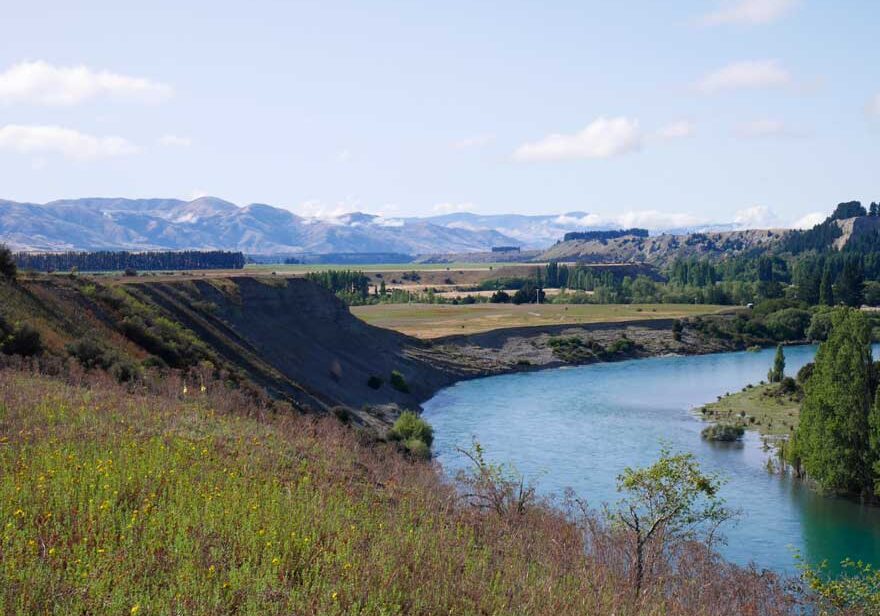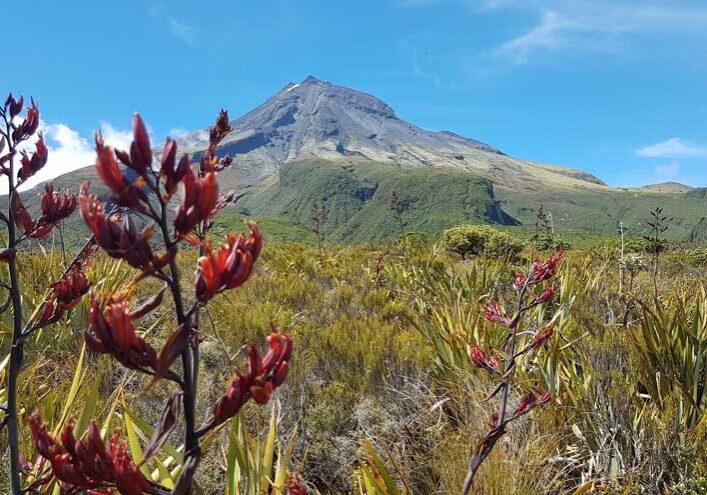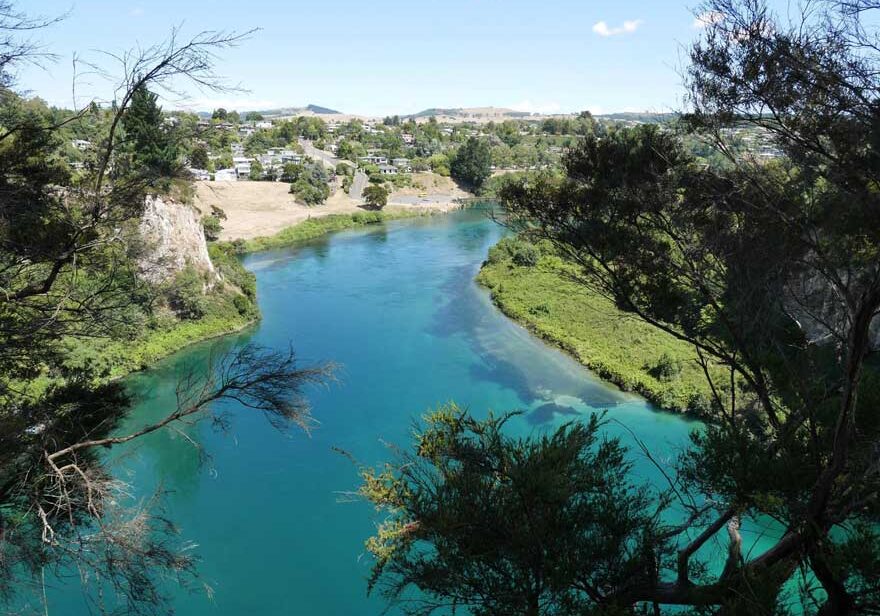Coastal and marine environments
Bar-Built Estuaries: Dynamics, Disturbances, and Future Challenges
Dr Sarah McSweeney1, Dr Danial Khojasteh2, Professor John Largier3, Professor Janine Adams4, Dr Lara van Niekerk5
1School of Earth and Environment, University of Canterbury, Christchurch, New Zealand, 2NSW Department of Climate Change, Energy the Environment and Water, Sydney, Australia, 3Bodega Marine Laboratory, Coastal & Marine Sciences Institute, University of California Davis, Bodega Bay, U.S.A., 4 Department of Botany, Institute for Coastal and Marine Research, Nelson Mandela University, Gqeberha, South Africa, 5Council for Scientific and Industrial Research, , South Africa
Bar-built estuaries have entrances that are either partially or wholly constricted by a wave-built barrier (or berm). An end member of bar-built estuaries are those systems which close intermittently during periods of low river flow and/or big waves. Bar-built estuaries provide important habitats and are often surrounded by dense populations and critical infrastructure. Their morphology and functioning depend on a delicate balance of fluvial, wave, and tidal processes, where even minor shifts in process dominance can cause significant changes in entrance stability, hydrodynamics, and biophysical processes – leading to dramatic shifts in habitat and connectivity. This makes bar-built estuaries particularly dynamic and sensitive to environmental change. Climate change, sea-level rise, and local human activity are exerting growing pressure on these environments, with implications for estuary habitats, human use, and management and policy. At the heart of this vulnerability of bar-built estuaries are geomorphological processes and patterns.
This session explores the physical processes of bar-built estuaries, their response to climate change and human activities, and their impact on estuarine ecology. We invite contributions on estuary morphodynamics, entrance processes, and the effects of climate change, sea level rise, altered hydrology, land use changes, and extreme weather events. Given their prevalence in developed coastal regions, research addressing both natural processes and human interventions is particularly relevant. The session aims to foster dialogue on future challenges, emphasising the need for interdisciplinary research to better understand and manage bar-built estuaries in a changing world. We welcome innovative approaches, modelling, and case studies from across the globe, with special attention to underrepresented regions where bar-built estuaries are common but understudied. This session will provide a platform to advance geomorphic understanding of bar-built estuaries and explore strategies to enhance resilience to future human and environmental pressures.
Coastal dynamics and climate change: from the recent past to the near future
Prof. Giuseppe Mastronuzzi1, Prof. Giovanni Coco2, Dr. Marco Anzidei3, Prof. Pietro P.C. Aucelli4, Prof. Karin Bryan2, Dr Angela Rizzo1
1Department of Earth and Geoenvironmental Sciences, University Of Bari Aldo Moro, Bari, Italy, 2School of Environment Faculty of Science, University of Auckland, Auckland, New Zealand, 3Istituto Nazionale di Geofisica e Vulcanologia, Roma, Italy, 4Department of Sciences and Technology, University of Naples Parthenope, Napoli, Italy
Coastal areas are exposed to multiple natural and anthropic hazards. Ongoing global warming has triggered accelerated sea-level rise (SLR) and variations in the intensity and frequency of extreme meteorological events. SLR, storms, and tsunamis can generate temporary flooding and permanent submersion of coastal areas, depending on the geomorphological and sedimentological features. Low-lying coastal areas such as alluvial plains, deltas, and lagoons, are considered the most prone to be impacted by processes like erosion and flooding, with significant consequences on ecosystems and human settlements. To support adaptation and the sustainable management of the coastal sectors, we need high-resolution datasets and advanced tools and technologies, which include remote sensing, machine learning, deep learning, and computer vision methodologies. This session is devoted to collecting contributions focussing on the expected global, regional, and local coastal modifications that will occur because of climatic changes, the potential impacts of extreme meteorological and inundation events over time, as well as the socio-economic assets exposed to sea-level rise. As part of this session, we seek studies on: a) coastal dynamics and evolution using multidisciplinary methodologies and investigations; b) modelling approaches for coastal risk assessment; c) the influence of coastal dynamics on coastal infrastructure; d) multi-risk assessment of the coastal zone; e) the impact of erosion, flooding on natural environments, infrastructure, socioeconomic assets and heritage sites; f) application of innovative techniques of Artificial Intelligence for the analyses of data collected in coastal areas; and, g) development of new techniques for remote survey and sensing for coastal environments.
Coastal geomorphology: from monitoring techniques to littoral hazard analysis
Alfredo Jaramillo1,5, Dr Saskia De Vilder5, Dr Javier Alcantara2, Dr Omar Cervantes3, Dr Mark Dickson4, Dr Malcolm Arnot5, Dr Kyle Bland5, Dr Jullie Lee5, Dr Camilo Botero6
1Massey University, Wellington, New Zealand, 2Universidad Autónoma de Madrid, Madrid, Spain, 3Universidad de Colima, Colima, Mexico, 4University of Auckland, Auckland, New Zealand, 5GNS Science - Te Pῡ Ao, Avalon, Lower Hutt, New Zealand, 6Dalhousie University, Halifax, Canada
The dynamic land-sea interface, shaped by complex geomorphic processes, is one of the most critical and vulnerable areas of the Earth's surface. As the world faces the escalating impacts of climate change, understanding coastal geomorphology and coastal risks has never been more important. With this in mind, we propose a session entitled " Coastal geomorphology: from monitoring techniques to littoral hazard analysis" to address these pressing challenges and promote interdisciplinary dialogue.
Coastal zones are characterised by their dynamic nature, influenced by a variety of factors such as wave action, tidal forces, sea-level rise, and sediment transport. These areas not only support a significant proportion of the world's population, but also provide essential ecosystem services and economic benefits. However, they are increasingly threatened by natural hazards and anthropogenic pressures. The proposed session aims to explore recent advances in the understanding of the geomorphic processes that shape these environments, the risks they pose to human settlements and natural systems, and the latest techniques and methodologies used for data collection in coastal monitoring programmes.
In bringing together experts in coastal geomorphology, risk assessment, and climatology, this session will highlight innovative research, methodologies and management strategies to mitigate and adapt to coastal risks. Discussions will focus on the integration of geomorphological knowledge into a risk assessment framework that enhances coastal resilience.
The inclusion of this session will contribute to a deeper understanding of coastal dynamics and support the development of adaptation strategies to address contemporary challenges, while serving as a platform to advance research and collaborative efforts in this critical field of geoscience.
Delta Geomorphology Observed from the Past to the Present: Interactions of Natural Processes and Anthropogenic Influences
Prof. Guilherme Fernandez1, Prof. Subhamita Chaudhuri2, Prof. Alfred Vespremeanu Stroe3, Dr. Sayantan Das2, Dr. Thais Baptista da Rocha1, Prof. José Maria Landim Dominguez4
1Universidade Federal Fluminense, Niterói, Brazil, 2West Bengal State University, Kolkata, India, 3University of Bucharest, Bucharest, Romania, 4Universidade Federal da Bahia, Salvador, Brazil
This session aims to explore the intricate relationship between natural processes and human activities that shape river deltas from their inception to more recent morphodynamics. Deltas are dynamic and vulnerable systems connecting land and sea, evolving under the influence of sea-level oscillations, fluvial sediment availability, coastal and river mouth hydro- and morphodynamics, and human pressure (land-use change, sediment reduction, coastal structures etc). Recently, river deltas face increasing pressure from human activity and climate change which dramatically affect their morphology and resilience.
We welcome contributions that examine both contemporary, historical and geological transformations in delta systems worldwide, with focus on their response to sea-level rise, human-landscape interactions, sediment and climate changes. We encourage discussions on interdisciplinary and innovative methodologies for assessing deltaic changes, such as numerical modelling of sediment transport and coastal changes, application of machine learning techniques and connecting time and spatial scales on deltaic evolution by chronostratigraphy, geochronology and geoarchaeology techniques.
By integrating diverse perspectives and case studies, this session will foster a comprehensive understanding of changes in deltaic geomorphology, highlighting the necessity for adaptive management strategies to address ongoing geomorphic and environmental changes.
Theme for the Scientific Programme:
This session aligns with the Coastal and marine environments theme by addressing the geomorphological processes that shape delta systems, which can be paralleled with planetary bodies exhibiting delta-like features. The exploration of deltaic dynamics can provide insights into sedimentary processes on other planets also.
Intended Format for the Session:
The session will include oral, poster presentations and a discussion section, providing opportunities for participants to engage in detailed discussions and share ideas, and explore future research directions and potential collaborations in delta geomorphology.
Innovative Perspectives on Coastal Boulder Studies
Dr Giovanni Scardino1, Prof Giovanni Scicchitano1, Prof N.A.K Nandasena2
1University of Bari Aldo Moro-Department of Earth and Geoenvironmental Sciencess, Bari, Italy, 2United Arab Emirates University-Department of Civil and Environmental Engineering, , United Arab Emirates
Coastal boulders are fundamental to understanding the geomorphological and hydrodynamic processes that shape coastal environments. These big out-of-size deposits, frequently displaced by high-energy events such as storms and tsunamis, act as natural indicators of both past and present coastal dynamics. Their distribution and movement provide crucial information for reconstructing the magnitude and recurrence of these events, helping refine predictive models. Studying coastal boulders offers deeper insights into wave energy transfer, fluid dynamics, and the interaction between marine forces and coastal landscapes. Furthermore, an in-depth analysis of their transport mode allows us to reconstruct the most reliable scenario for their displacement in a given paleo-landscape. Innovative geophysical techniques, such as photogrammetry and terrestrial laser scanning, now provide high-resolution data on boulder dimensions and movements, enhancing our ability to evaluate the effects of high-energy marine events. In parallel, advanced numerical models enable a more detailed analysis of boulder transport dynamics, while artificial intelligence is opening new pathways for the rapid and in-depth exploration of boulder deposits and isolated blocks. This session will showcase cutting-edge technologies and methodologies that expand our understanding of coastal hazards and offer new strategies for risk mitigation.
Lessons and future prospects for rock coast geomorphology
Dr Sophie Horton1, Dr Runjie Yuan2, Prof Wayne Stephenson3
1University of Canterbury, Christchurch, New Zealand, 2University of Melbourne, Melbourne, Australia, 3University of Otago, Dunedin, New Zealand
Rock coasts are a dominant feature across the world’s littoral zones and present an important landscape element that is both prone to erosion as well as acting as a bulwark from marine incursion. As landscape elements, rock coasts include cliff faces, shore platforms, mixed cliff-platform-beach features, and smaller scale features that are susceptible to irreversible changes from erosion processes associated with tectonism, climate change, and variations in sea level. As such, the processes that operate on these landscapes are a mixture of wave action and/or subaerial weathering, depending on the local context. Although the rates of change are geographically variable, these coastal features are likely to be strongly affected by future climate change, as well as other changes associated with a narrowing of coastal margins with sea level rise.
Understanding the rate of change on rock coasts, however, requires observation at different temporal and spatial scales as rates are coupled to local lithological characteristics, stochastic event-scale responses, and biological mediation. We invite contributions from all aspects of rock coast geomorphology, including process geomorphology of cliffs and shore platforms as well as studies related to wave and ocean processes, sediment budgets, modelling, and biogeomorphological controls.
The objective of this session is to take stock of what we have learnt so far about rock coasts and explore the new horizons to direct future research. Case studies are welcome and may include ancient landform development, marine terraces, and tectonic chronosequences. We particularly want to include contributions that provide insight into new observation techniques and applications for quantifying landscape change, across different time scales e.g., discrete event-scale responses to millennial-scale modelling responses, or different spatial scales (micro- to macro-scale observation techniques). This session fits within the themes of Coastal and Marine Environments of the IAG, and is sponsored by the Rocky Coasts Working Group.
Marine geomorphology - mapping and applications
Dr Rachel Nanson1, Dr Riccardo Arosio2, Dr Sebastian Krastel3, Dr Kevin Mackay4, Dr Mardi McNeil1, Dr Marta Ribo7, Dr Alessandra Savini6, Dr Sally Watson4
1Geoscience Australia, , Australia, 2University College Cork, , Ireland, 3Kiel University, , Germany, 4National Institute of Water and Atmospheric Research, , New Zealand, 5Monterey Bay Aquarium Research Institute, , United States of America, 6University Milano-Biocca, , Italy, 7Deakin University, , Australia
The ocean floor is characterised by diverse landforms that have been shaped by tectonic, sedimentary, volcanic, oceanographic and biological processes operating across multiple spatial and temporal scales. Integrated bathymetry, seabed, and sub-seabed data provide valuable insights into the distribution, stratigraphy and evolution of submarine landforms, and contribute to a broad range of research, industry and government programs and initiatives.
This session invites contributions that showcase the diverse geomorphic processes that shape underwater landscapes, as well as the rapidly evolving field of marine geomorphology mapping. Our aim is to bring together seafloor and sub-seafloor mapping and geomorphology specialists to foster cooperation and collaboration between multidisciplinary practitioners from academic, industry and government sectors. Contributions may include work from any depth or physiographic region in the marine realm (e.g. oceanic plateaus, abyssal hills, mid-ocean ridges and continental margins). Datasets of any scale, from satellite-predicted depth to ultra-high-resolution swath bathymetry, and sub-surface imaging and sampling, are welcomed. Early career researchers are encouraged to participate in the session.
This session is co-organised by the International Seabed Geomorphology Mapping Working Group and the IAG Submarine Geomorphology Working Group.
Ocean and lake floor geomorphology
Dr Suzanne Bull1, Dr Sally Watson2, Dr Joshu Mountjoy2, Dr Jess Hillman2
1Gns Science, Lower Hutt, New Zealand, 2NIWA, Miramar, New Zealand
This interdisciplinary session examines the morphology and evolution of underwater landforms and the processes responsible for their formation, including erosional and depositional processes, sediment movement and deformation, underwater landslides, volcanic activity, fluid migration, and anthropogenic impacts. Such processes can be hazardous to coastal populations and offshore infrastructure, impact coastal and marine management, or have implications for carbon burial, disbursement of pollutants and general ocean health. The aim of this session is to enable scientists from different disciplines to interact, learn and facilitate cross-disciplinary collaboration within this field of research. We encourage contributions to this session that are comprehensive and interdisciplinary within the broad field of marine and lacustrine geomorphology and geology, from joining land to sea, coastal areas, lakes, shallow shelves, and slope down to the deep ocean floor. We also invite contributions related to emerging or transferred technologies and novel approaches to better understand these most extensive geomorphic systems on our planet.
River Deltas: Dynamic Systems Under Climate and Human Forcings
Dr Florin Zăinescu1,2, Prof Edward Anthony1, Dr Florin Tătui2
1Aix-Marseille University, CNRS, IRD, INRAE, Collège de France, CEREGE., Aix en Provence, France, 2Faculty of Geography, University of Bucharest, Bucharest, Romania
River deltas, critical interfaces between land and sea, face unprecedented challenges from anthropogenic activities and climate change. This session aims to explore the multifaceted dynamics of river deltas through an interdisciplinary lens, spanning multiple scales from local to global. We explore multi-scale interactions between local delta processes and large-scale coastal behaviour, while also examining how global changes transform these systems. Our goal is to provide a comprehensive scientific understanding of delta dynamics that is relevant to both immediate management decisions and long-term environmental strategies.
We welcome contributions that push the boundaries of delta research, whether through cutting-edge remote sensing and field techniques, novel modelling approaches, or integrative studies that bridge traditional disciplinary divides. Of particular interest are:
- Cascading effects of watershed changes on coastal systems.
- River-marine sediment fluxes at delta interfaces.
- Impacts of relative sea-level rise and subsidence.
- Nature-based solutions and socio-ecological dimensions of delta management.
By fostering a rich dialogue across disciplines, we aim to chart a course toward more resilient, sustainable delta futures. Join us in exploring these critical landscapes where land, sea, and society converge—and where the challenges and opportunities of the Anthropocene come into sharp relief.
Tropical coral reefs and reef-lined coasts
Dr Emma Ryan1, Dr Daniel Harris1, Professor Paul Kench1
1The University of Auckland, Auckland, New Zealand, 2The University of Queensland, Brisbane, Australia, 3National University of Singapore, , Singapore
Tropical coral reefs and associated shorelines are some of the most sensitive systems to global climate change and sea-level rise. While the ecological sensitivity of coral reefs is well known, the geomorphic sensitivity is less well resolved. This is a critical knowledge gap given the reef eco-geomorphic system is fundamental in controlling morphodynamic properties of reef landforms across the range of temporal and spatial scales relevant to considering past, present and future change. This session seeks to bring together those working in the general fields of geomorphology, coastal processes, morphological development, and morphodynamics of tropical coral reefs and reef associated landforms (shorelines/coastlines/islands). We welcome contributions across the range of temporal and spatial scales that shed new insights on geomorphic properties, processes and dynamics in reef systems. Contributions may include but are not limited to: eco-morphodynamics; modelling of coral reef-lined shorelines; reef and/or reef-associated landform development and dynamics; remote sensing of coral reefs and associated landforms; sedimentology and sediment production; and hydrodynamic processes.



